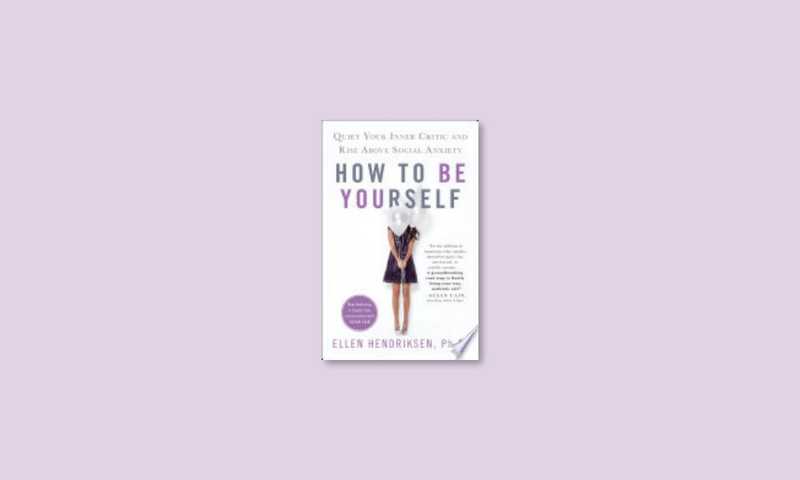
How to Be Yourself by Ellen Hendriksen: A Comprehensive Guide to Reducing Stress and Anxiety
In today's fast-paced and competitive world, we often find ourselves struggling to stay true to our own identity. We're constantly bombarded with images of perfection and success, which can lead us to feel pressured to conform to societal expectations. This can result in feelings of anxiety and stress, as we try to navigate the delicate balance between being ourselves and fitting in. In her book "How to Be Yourself," clinical psychologist Ellen Hendriksen offers practical advice and guidance on how to overcome social anxiety and embrace our true selves.
In this blog post, we will explore some key takeaways and actionable steps from the book, aimed at helping you reduce stress and anxiety in your life. By understanding the root causes of social anxiety and implementing these strategies, you can begin to live a more authentic and fulfilling life.
Actionable Strategies to Reduce Stress and Anxiety
Understand the root of social anxiety
Social anxiety stems from a fear of being negatively judged or rejected by others. This fear can lead to avoidance of social situations or excessive preoccupation with how we are being perceived. To combat social anxiety, it's essential to first recognize and understand its root causes. Hendriksen identifies three key components of social anxiety:
- Negative self-perception: Believing you are socially inept or inferior to others.
- Excessive self-monitoring: Constantly assessing your own behavior and appearance.
- Safety behaviors: Actions taken to avoid embarrassment or scrutiny, such as avoiding eye contact or staying quiet in conversation.
Challenge negative thoughts
Social anxiety is often fueled by negative thoughts and beliefs about ourselves. These thoughts can become self-fulfilling prophecies, causing us to act in ways that confirm our fears. To break this cycle, Hendriksen recommends the following strategies:
- Identify your negative thoughts: Recognize when you're engaging in negative self-talk or making assumptions about how others perceive you.
- Examine the evidence: Ask yourself if there is any factual basis for your beliefs. Are you overgeneralizing or catastrophizing a situation?
- Replace negative thoughts with realistic ones: Practice replacing irrational thoughts with more balanced, accurate perspectives.
Face your fears through gradual exposure
Avoiding social situations only serves to reinforce our anxieties. Hendriksen suggests gradually facing your fears through exposure, which involves confronting social situations in a controlled and incremental way. She recommends the following steps:
- Create a fear ladder: List social situations that cause you anxiety, ranked from least to most anxiety-provoking.
- Start at the bottom: Begin by facing the least anxiety-provoking situation on your list and working your way up as you become more comfortable.
- Practice regularly: Consistent exposure is key to reducing your anxiety over time.
Develop mindful awareness
Mindfulness is the practice of paying attention to the present moment without judgment. This can help us become more aware of our thoughts and feelings, allowing us to respond more effectively to anxiety. Hendriksen suggests the following mindfulness techniques:
- Focus on your breath: Pay attention to your breathing as a way to anchor yourself in the present moment.
- Observe your thoughts: Notice your thoughts as they arise without getting caught up in them. Recognize that thoughts are not facts, and they do not define you.
- Practice self-compassion: Treat yourself with kindness and understanding, acknowledging that everyone experiences anxiety and imperfection.
Improve your communication skills
Effective communication can help reduce anxiety by increasing our confidence and fostering more positive social interactions. Hendriksen offers several tips for improving communication:
- Listen actively: Focus on the speaker, maintain eye contact, and ask open-ended questions to show genuine interest.
- Express empathy: Validate others' feelings and experiences by acknowledging their emotions and offering support.
- Be assertive: Clearly express your needs and opinions while respecting the rights and feelings of others.
Embrace vulnerability
Being open and authentic in social situations can feel risky, but it's essential for establishing genuine connections with others. Embracing vulnerability involves:
- Sharing personal experiences: Opening up about your thoughts and feelings can foster deeper connections with others.
- Taking risks: Be willing to put yourself out there, even if it means risking rejection or embarrassment.
- Accepting imperfection: Recognize that we all have flaws and that it's okay to make mistakes.
Conclusion
In "How to Be Yourself," Ellen Hendriksen provides valuable insights and practical strategies for overcoming social anxiety and embracing our true selves. By understanding the root causes of social anxiety, challenging negative thoughts, facing our fears through gradual exposure, developing mindful awareness, improving communication skills, and embracing vulnerability, we can reduce stress and anxiety in our lives and cultivate more authentic, fulfilling relationships.
Implementing these strategies takes practice and patience, but the rewards of living a more genuine and confident life are well worth the effort. So take a deep breath, embrace your unique qualities, and remember that you are more than your anxiety.